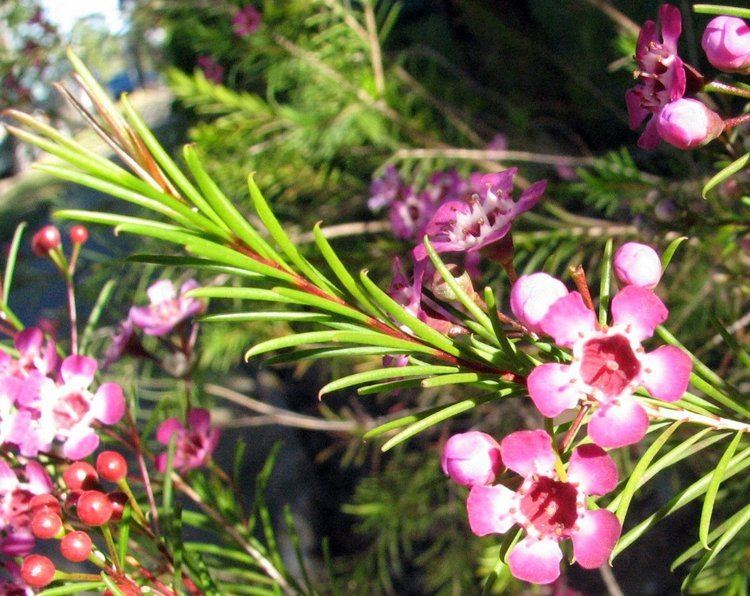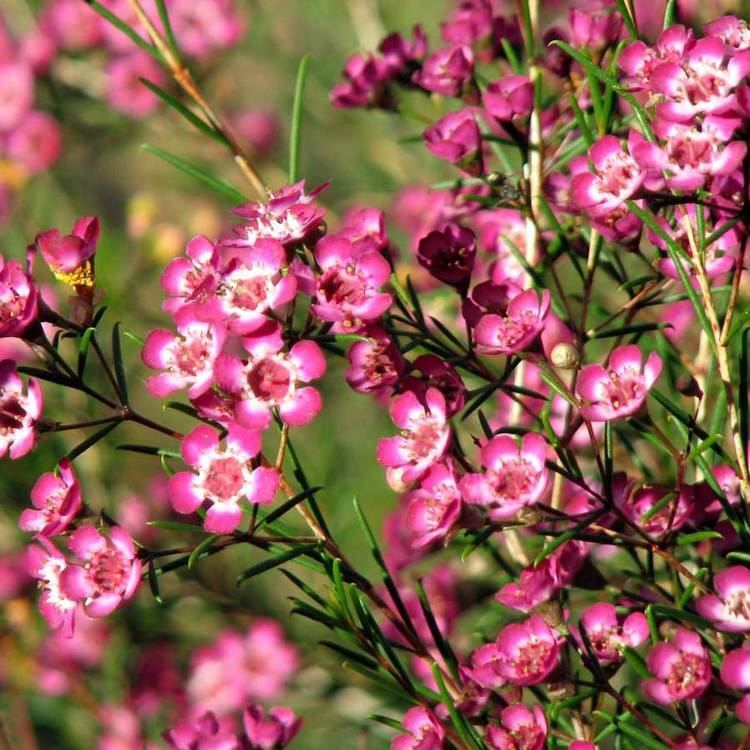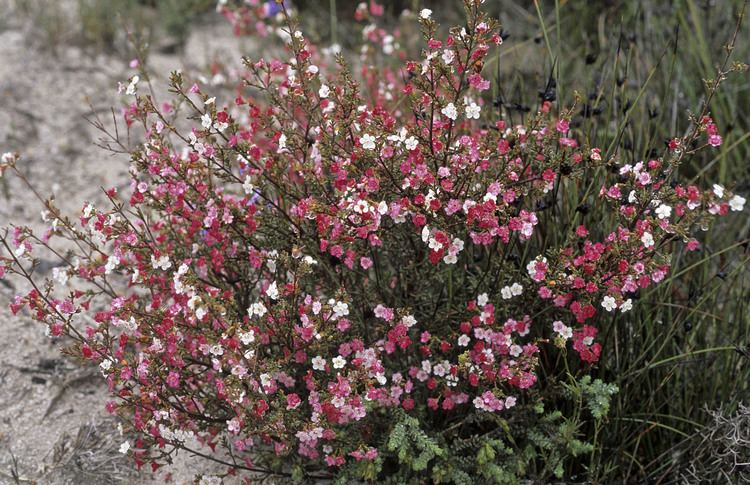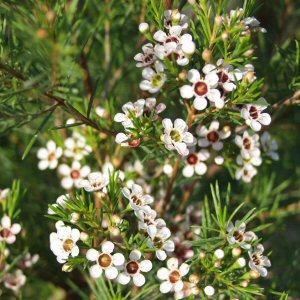Scientific name Chamelaucium Rank Genus | Higher classification Chamelaucieae | |
 | ||
Similar Chamelaucium uncinatum, Myrtaceae, Anigozanthos, Verticordia, Teatree | ||
Chamelaucium garden plants
Chamelaucium, also known as waxflower, is a genus of shrubs endemic to south western Western Australia. They belong to the myrtle family Myrtaceae and have flowers similar to those of the tea-trees (Leptospermum). The most well-known species is the Geraldton Wax, Chamelaucium uncinatum, which is cultivated widely for its large attractive flowers.
Contents

Description

Plants of the genus Chamelaucium are woody evergreen shrubs ranging from 15 cm (6 in) to 3 m (10 ft) high. The leaves are tiny to medium-sized and arranged oppositely on the stems. They contain oil glands and are aromatic, often giving off a pleasant aroma when crushed. The flowers are small and have five petals, ten stamens, and are followed by small hardened fruit.
Taxonomy

The genus was first defined by French botanist René Louiche Desfontaines in 1819. The derivation of the name is unclear. They are commonly known as waxplants, or wax flowers from the waxy feel of the petals. Fourteen species are currently recognised within the genus. It gives its name to a number of closely related genera, collectively known as the Chamelaucium alliance within the family Myrtaceae; larger members include Verticordia, Calytrix, Darwinia, Micromyrtus, Thryptomene and Baeckea.
Species
Species include:
Distribution and habitat

Restricted to the southwest of Western Australia, Chamelaucium species grow most commonly in heathland communities growing on sand near the coast or inland, and in granite outcrops. Some grow in more semi arid climates.
Cultivation
In cultivation, they do well in dryer climates with good drainage and sunny aspect. They are hardy to frost and drought, although sensitive to Phytophthora cinnamomi. The best known and most widely cultivated member of the genus by far is C. uncinatum, which is widely grown in gardens across southern Australia, and for the cut flower industry in the USA and Israel.
